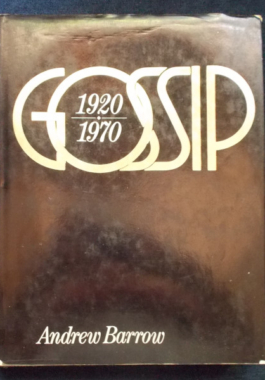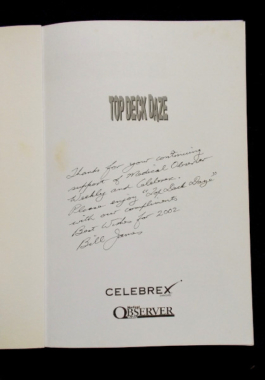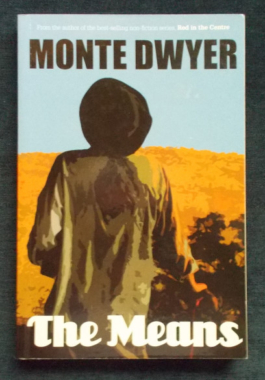-

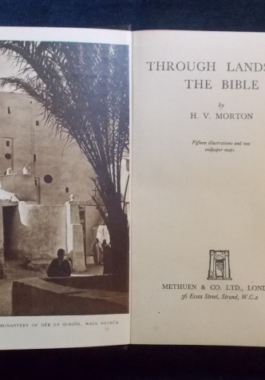 In the 1930s H.V. Morton took trips through the Middle East and recorded his observations. This book focuses on his travels through Syria, Iraq and Egypt. As he travels to ruins of past civilizations and visits places where future conflicts will take place, the reader explores the history and life of this cradle of civilization though his eyes. A precise and often witty observer, Morton provides background both historical and religious to the places he visits and makes the reader feel like a fellow traveller. Illustrated with sepia photographs.
In the 1930s H.V. Morton took trips through the Middle East and recorded his observations. This book focuses on his travels through Syria, Iraq and Egypt. As he travels to ruins of past civilizations and visits places where future conflicts will take place, the reader explores the history and life of this cradle of civilization though his eyes. A precise and often witty observer, Morton provides background both historical and religious to the places he visits and makes the reader feel like a fellow traveller. Illustrated with sepia photographs. -

 Clune set out on New Year's Day, 1947, on what he calls a Marco Polo marathon, modern style. In his own breezy fashion he tells how he took the long journey from Sydney to London by air, but in easy stages - stopping long enough in each of the countries he visited to discover something of interest about it. His trip took him into 31 countries: Indonesia, Singapore, Malaya, Burma, India, Pakistan, Afghanistan, Balochistan, Bahrain Protctorate, Iraq, Iran, Trans-Jordan, Syria, Palestine, Egypt, Malta, Sicily, Corsica and France, just to name a few. Clune took black coffee - very strong and bitter - with the Shaikh of Bahrein; and when he was invited to a sumptuous repast (without knives or forks) in Afghanistan, he complimented his generous host in the for mally correct manner by belching loudly. In Afghanistan, he taught the tribesmento sing Waltzing Matilda and in Singapore, visited the prisoner-of-war camps, attended the war-trials, and even visited the prisons where he saw the Japanese officers who were condemned to die. Illustrated with maps and black and white photographs.
Clune set out on New Year's Day, 1947, on what he calls a Marco Polo marathon, modern style. In his own breezy fashion he tells how he took the long journey from Sydney to London by air, but in easy stages - stopping long enough in each of the countries he visited to discover something of interest about it. His trip took him into 31 countries: Indonesia, Singapore, Malaya, Burma, India, Pakistan, Afghanistan, Balochistan, Bahrain Protctorate, Iraq, Iran, Trans-Jordan, Syria, Palestine, Egypt, Malta, Sicily, Corsica and France, just to name a few. Clune took black coffee - very strong and bitter - with the Shaikh of Bahrein; and when he was invited to a sumptuous repast (without knives or forks) in Afghanistan, he complimented his generous host in the for mally correct manner by belching loudly. In Afghanistan, he taught the tribesmento sing Waltzing Matilda and in Singapore, visited the prisoner-of-war camps, attended the war-trials, and even visited the prisons where he saw the Japanese officers who were condemned to die. Illustrated with maps and black and white photographs. -
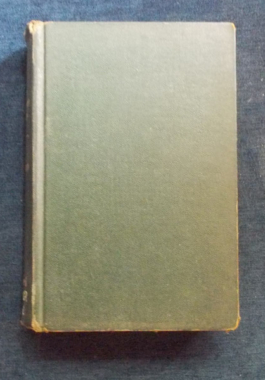
 H/V. Morton: This companion volume to In Search Of Scotland is the record of a long and leisurely journey. In the course of it I have shaken up the dust of history and I have tried also to put into words the impression made by Scotland upon the mind of a stranger who, for some reason or other, always feels happy over the border. Contents include : I Go To Scotland Again; In Which I Drive Into Galloway; How I Meet The Tartan Weavers of Kilbarchan; How I leave Mull; I Walk The Corrieyarrick; Tells How I Go To John O'Groats; In Which I Decide To Walk The Larig Ghru; I Go To Sea In An Aberdeen Trawler; How The Honours of Scotland Were Saved; In Which I tell You Something About Food.
H/V. Morton: This companion volume to In Search Of Scotland is the record of a long and leisurely journey. In the course of it I have shaken up the dust of history and I have tried also to put into words the impression made by Scotland upon the mind of a stranger who, for some reason or other, always feels happy over the border. Contents include : I Go To Scotland Again; In Which I Drive Into Galloway; How I Meet The Tartan Weavers of Kilbarchan; How I leave Mull; I Walk The Corrieyarrick; Tells How I Go To John O'Groats; In Which I Decide To Walk The Larig Ghru; I Go To Sea In An Aberdeen Trawler; How The Honours of Scotland Were Saved; In Which I tell You Something About Food. -
 A book by H. V. Morton is more than a travel book: it is a sensitive interpretation of a country's people and their history. The success of his first book on England, established the popularity of something new and refreshing in this type of literature. Mr Morton's travels have gained him thousands of readers in all parts of the world. The author has frequently been requested to define the secret of writing a travel book. He always replies: 'There is no secret. You either enjoy yourself or you do not. If you do, say so; if you do not - say so.' This disarming sincerity is, perhaps, responsible for the charm and fascination of his books. The feel and smell of the countryside, also a sense of movement, find their way into these light-hearted wanderings, and, combined with humour, acute observation, sympathy and an engaging curiosity, have justly gained for them a wide and increasing popularity. Contents Include: I Go In Search of Scotland - I Explore Edinburgh - I See The Castle Of Roslin - Tells How I Go On Through Rain To Lochleven - In Which I Climb Into The Highlands - I Describe A Mystery Of Aberdeen - Describes A Sincere Scottish Breakfast - In Which I Work East To West - I Go By Sea to Skye - How I Break The Sabbath - I Sail Up The Clyde Into Glasgow - In Which I Encounter Men Who Melt Steel. Illustrated with black and white photographs.
A book by H. V. Morton is more than a travel book: it is a sensitive interpretation of a country's people and their history. The success of his first book on England, established the popularity of something new and refreshing in this type of literature. Mr Morton's travels have gained him thousands of readers in all parts of the world. The author has frequently been requested to define the secret of writing a travel book. He always replies: 'There is no secret. You either enjoy yourself or you do not. If you do, say so; if you do not - say so.' This disarming sincerity is, perhaps, responsible for the charm and fascination of his books. The feel and smell of the countryside, also a sense of movement, find their way into these light-hearted wanderings, and, combined with humour, acute observation, sympathy and an engaging curiosity, have justly gained for them a wide and increasing popularity. Contents Include: I Go In Search of Scotland - I Explore Edinburgh - I See The Castle Of Roslin - Tells How I Go On Through Rain To Lochleven - In Which I Climb Into The Highlands - I Describe A Mystery Of Aberdeen - Describes A Sincere Scottish Breakfast - In Which I Work East To West - I Go By Sea to Skye - How I Break The Sabbath - I Sail Up The Clyde Into Glasgow - In Which I Encounter Men Who Melt Steel. Illustrated with black and white photographs. -
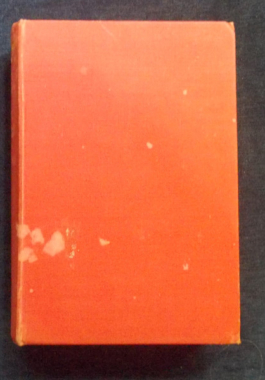
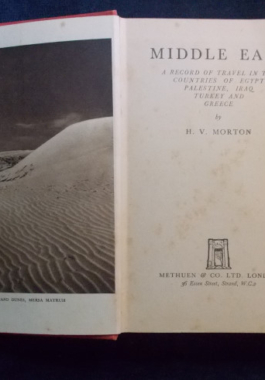
Middle East: H.V. Morton
$15.00Morton's first foreign travel book, In the Steps of the Master (1934), was well received and sold over half a million copies. The Master of the title was Jesus, and the book was an account of Morton's travels in the Holy Land. This was soon followed by In the Steps of St. Paul (1936), and describes Turkey 13 years after the Turkish War of Independence and its founding as a modern state. This was followed by Through Lands of the Bible (1938) in which he visits Egypt, Palestine, Syria and Iraq. Extracts from all three books were combined and published as Middle East during World War II for British servicemen stationed in the Middle East. -

 The bushranging days of the nineteenth century are brought to life - the time when audacious gangs won notoriety by their crimes. This book vividly depicts the dark legacy of the convict system for both men and women, the stirring times of exploration and pioneering development, the hectic gold rushes and the riots they provoked - all the turmoil of life in a tough, rough, new country. Illustrated by Ralph Warner.
The bushranging days of the nineteenth century are brought to life - the time when audacious gangs won notoriety by their crimes. This book vividly depicts the dark legacy of the convict system for both men and women, the stirring times of exploration and pioneering development, the hectic gold rushes and the riots they provoked - all the turmoil of life in a tough, rough, new country. Illustrated by Ralph Warner. -

 The Antarctic tragedy of Captain Oates. On March 17, 1912, he crawled from a tent to his death in blizzard conditions of -40 degrees Celsius. He had always been an outsider on Scott's Polar expedition. He died on his 32nd birthday, unaware that his daughter had been born. This is the first major biography of Lawrence Edward Grace "Titus" Oates, who became a dashing cavalry officer and hero in the Boer War, a successful jockey and, having paid £1,000 to join Scott's doomed South Pole expedition, became a national hero for sacrificing himself to save his comrades. Fresh analysis is offered of his military career, both as hero in the Boer War, where he was denied a VC, and later in Ireland. This book tells of his early life and school days; and the role of his austere mother who exerted a powerful influence during his life and who continued to control her son long after his death: on her deathbed she ordered the destruction of his letters and diaries that she had hidden and believed to have been destroyed long since...all of which sheds new light on his possible motives for joining the expedition.
The Antarctic tragedy of Captain Oates. On March 17, 1912, he crawled from a tent to his death in blizzard conditions of -40 degrees Celsius. He had always been an outsider on Scott's Polar expedition. He died on his 32nd birthday, unaware that his daughter had been born. This is the first major biography of Lawrence Edward Grace "Titus" Oates, who became a dashing cavalry officer and hero in the Boer War, a successful jockey and, having paid £1,000 to join Scott's doomed South Pole expedition, became a national hero for sacrificing himself to save his comrades. Fresh analysis is offered of his military career, both as hero in the Boer War, where he was denied a VC, and later in Ireland. This book tells of his early life and school days; and the role of his austere mother who exerted a powerful influence during his life and who continued to control her son long after his death: on her deathbed she ordered the destruction of his letters and diaries that she had hidden and believed to have been destroyed long since...all of which sheds new light on his possible motives for joining the expedition. -

Whole Life: Morris Lurie
$10.00Morris Lurie, author, wrote more than twenty books including Flying Home, which was selected by the National Book Council as one of the ten best Australian books of the decade. His Twenty-Seventh Annual African Hippopotamus Race was voted by the schoolchildren of Victoria as their favourite story book by an Australian author. -
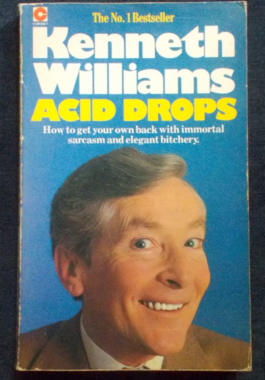 Kenneth Williams, star of stage, radio, screen and Carry On put together a collection of witty, wicked put-downs, retorts, comebacks - and all those great responses we never think of at the time! These have been collected from far and wide across the world of film, literature, politics and celebrity. From Dorothy Parker, observing a notorious society flirt: That woman can speak eighteen languages and can;t say 'No' in any of them. Or Groucho Marx, to a delighted author: From the moment I picked up your book until I put it down, I was convulsed with laughter...some day I intend to read it... After W.C. Fields made his feelings about children widely known, he was asked how he really liked children: His response? "Boiled or fried..." Illustrated by ffolkes.
Kenneth Williams, star of stage, radio, screen and Carry On put together a collection of witty, wicked put-downs, retorts, comebacks - and all those great responses we never think of at the time! These have been collected from far and wide across the world of film, literature, politics and celebrity. From Dorothy Parker, observing a notorious society flirt: That woman can speak eighteen languages and can;t say 'No' in any of them. Or Groucho Marx, to a delighted author: From the moment I picked up your book until I put it down, I was convulsed with laughter...some day I intend to read it... After W.C. Fields made his feelings about children widely known, he was asked how he really liked children: His response? "Boiled or fried..." Illustrated by ffolkes. -
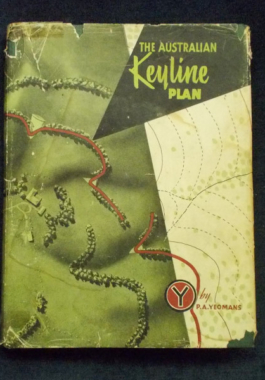 After only three years of experimentation with the Keyline system, Yeomans self-published this, his first of several books. It is an eye-opening look at how to help land retain all the rainfall it receives, opening the whole soil body to root penetration and releasing the natural fertility of the land. As a mining engineer and gold assayer, Yeomans had developed a keen sense of hydrology and equipment design. Upon his brother-in-law's death in a grass fire, Yeomans assumed management of a large tract of land he later named Nevallan in New South Wales. There he developed improved methods and equipment for cultivation. His designs won him The Prince Philip Design Award Australia in 1974. His Keyline principles or concepts (Keyline Design) have been adopted by farm owners in almost every country in the world. Yeomans' Keyline concepts are now part of the curriculum of many sustainable agriculture courses in colleges and universities across the world. Illustrated with diagrams and black and white and colour photographs.
After only three years of experimentation with the Keyline system, Yeomans self-published this, his first of several books. It is an eye-opening look at how to help land retain all the rainfall it receives, opening the whole soil body to root penetration and releasing the natural fertility of the land. As a mining engineer and gold assayer, Yeomans had developed a keen sense of hydrology and equipment design. Upon his brother-in-law's death in a grass fire, Yeomans assumed management of a large tract of land he later named Nevallan in New South Wales. There he developed improved methods and equipment for cultivation. His designs won him The Prince Philip Design Award Australia in 1974. His Keyline principles or concepts (Keyline Design) have been adopted by farm owners in almost every country in the world. Yeomans' Keyline concepts are now part of the curriculum of many sustainable agriculture courses in colleges and universities across the world. Illustrated with diagrams and black and white and colour photographs. -
 Andrews believed that that the coastal land of New South Wales has some of the most beautiful country on earth. In this book he nostalgically revisited excursions he made as a boy and a young man - the catchments of the Manning, the Hunter and the Hastings rivers. The Manning area, where his great-grandfather was a pioneer was particularly interesting to him and ha special tales to tell - all before the bulldozer and the chainsaw. In the snowland of the Snowy Mountains are Andrews; first forays on skis at the time the Kosciusko State Park was just emerging, and before the Snowy Mountains Hydro-Electric Authority and the National Parks and Wildlife Service. Filled with maps, photographs, sketches and Andrews' poems.
Andrews believed that that the coastal land of New South Wales has some of the most beautiful country on earth. In this book he nostalgically revisited excursions he made as a boy and a young man - the catchments of the Manning, the Hunter and the Hastings rivers. The Manning area, where his great-grandfather was a pioneer was particularly interesting to him and ha special tales to tell - all before the bulldozer and the chainsaw. In the snowland of the Snowy Mountains are Andrews; first forays on skis at the time the Kosciusko State Park was just emerging, and before the Snowy Mountains Hydro-Electric Authority and the National Parks and Wildlife Service. Filled with maps, photographs, sketches and Andrews' poems. -
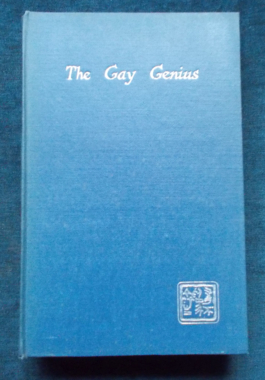

The Gay Genius: Lin Yutang
$65.00The biography of Su Tungpo, the celebrated and famous philosopher, poet, artist, government official and gourmand of 10th century China. He was a product of a centuries-old social system - a member of the literati. Taught to absorb the classics of Chinese literature at a young age, he rose to prominence by his remarkable performance at the national examinations, the entry point into a life of participation in the upper levels of the Chinese government. He was outspoken in his criticism of corrupt practices of government officials. From the book: ...an incorrigible optimist, a great humanitarian, a friend of the people, a prose master, an original painter, a great calligraphist, an experimenter in wine making, an engineer, a hater of puritanism, a yogi, a Buddhist believer, a Confucian statesman, a secretary to the emperor, a confirmed winebibber, a humane judge, a dissenter in politics, a prowler in the moonlight, a poet, and a wag. He sounds like someone we'd all love to know. Illustrated with black and white photographs of truly beautiful Chinese art of the period.
-
 Shocking and scandalous stories of the rich, famous and shameless! Smart, educated and accomplished people - often the pillars of society - sometimes behave in the most uncharacteristic and fascinating ways. These are stories of adultery, perversion, shameless greed, theft and deception - scandal at its most raw - that have brought down presidents, prime ministers, clergy and famous people from every walk of life. There's political misconduct; murder and mystery; false prophets; double lives and private perversions of world-recognised names. The scandals climax in catastrophic exposures and career-destroying indiscretions that rival great fiction and are all the more astounding because they are seminal moments in our history. The stories often share selfish desires, yet each tale shocks us - sometimes for its audacity, sometimes for its complexity and sometimes for its pure idiocy. When will people who are in high and public positions realise that they shouldn't get involved in illegal activities or naughty behavior?
Shocking and scandalous stories of the rich, famous and shameless! Smart, educated and accomplished people - often the pillars of society - sometimes behave in the most uncharacteristic and fascinating ways. These are stories of adultery, perversion, shameless greed, theft and deception - scandal at its most raw - that have brought down presidents, prime ministers, clergy and famous people from every walk of life. There's political misconduct; murder and mystery; false prophets; double lives and private perversions of world-recognised names. The scandals climax in catastrophic exposures and career-destroying indiscretions that rival great fiction and are all the more astounding because they are seminal moments in our history. The stories often share selfish desires, yet each tale shocks us - sometimes for its audacity, sometimes for its complexity and sometimes for its pure idiocy. When will people who are in high and public positions realise that they shouldn't get involved in illegal activities or naughty behavior? -
 Gerald Durrell's debut book is the chronicle of a six months collecting trip to the West African colony of British Cameroon - now Cameroon - that Durrell made with the highly regarded aviculturist and ornithologist John Yealland between December 1947 and August 1948. Their reasons for going on the trip were twofold: to collect and bring back alive some of the fascinating animals, birds, and reptiles that inhabit the region and secondly, for both men to realise a long cherished dream to see Africa. It's a combination of comic exaggeration and environmental accuracy, portrayed in Durrell's light, clever prose that successfully launched Durrell's career as a writer of both non-fiction and fiction, which in turn financed his work as a zookeeper and conservationist.
Gerald Durrell's debut book is the chronicle of a six months collecting trip to the West African colony of British Cameroon - now Cameroon - that Durrell made with the highly regarded aviculturist and ornithologist John Yealland between December 1947 and August 1948. Their reasons for going on the trip were twofold: to collect and bring back alive some of the fascinating animals, birds, and reptiles that inhabit the region and secondly, for both men to realise a long cherished dream to see Africa. It's a combination of comic exaggeration and environmental accuracy, portrayed in Durrell's light, clever prose that successfully launched Durrell's career as a writer of both non-fiction and fiction, which in turn financed his work as a zookeeper and conservationist. -
 A fabulous chunk of Australiana in this wide selection of anecdotes compiled by John Laws and Christopher Stewart that ranges through Australia's history: from the First Fleet to the rock 'n' roll of the 1950s, these are fascinating stories that detail the people and events that helped shape the Australian legend. There's heroism, perseverance, strange coincidences genius, tragedy and warfare. And with every tale, no matter how well-known - there was always a little more to it.
A fabulous chunk of Australiana in this wide selection of anecdotes compiled by John Laws and Christopher Stewart that ranges through Australia's history: from the First Fleet to the rock 'n' roll of the 1950s, these are fascinating stories that detail the people and events that helped shape the Australian legend. There's heroism, perseverance, strange coincidences genius, tragedy and warfare. And with every tale, no matter how well-known - there was always a little more to it. -

Sand, Sweat And Camels: The Australian Companies Of The Imperial Camel Corps (I.C.C.) were formed in January 1916 in order to deal with the revolt of pro-Turkish Senussi tribesmen in Egypt’s Western Desert. The first four companies were recruited from Australian infantry battalions recuperating after Gallipoli. Four battalions were eventually formed: the 1st and 3rd were entirely Australian, the 2nd was British, and the 4th was a mix of Australians and New Zealanders. The I.C.C. also had its own machine gun unit, and a battery of light artillery recruited in Hong Kong and Singapore. Operations were characterised by long patrols and brief skirmishes in the deserts of North Africa and the Middle East. The men of the ICC had a rough reputation, as Australian battalion commanders had seized upon it as an opportunity to offload some of their more difficult characters. In 1917 a British supply dump at Rafa was warned to double their guards as the ICC was going to be camped nearby. The men of the I.C.C. were, however, resourceful and effective. While defending a hill called Musallabeh in April 1918, the men of the I.C.C. ran out of hand grenades. They resorted to heaving boulders down upon the attacking Turks and eventually fought them off. The hill became known as the “Camel’s Hump”. The author, George Langley was the commanding officer of the 1st (Australian Battalion), Imperial Camel Corps. Australian Aviator: In April, 1915, after undertaking a 5-year apprenticeship as a mechanic, Brearly worked his way to the United Kingdom and enlisted in the Royal Flying Corps. Whilst flying in France during World War I he was badly wounded when he was shot down over the Western Front in October, 1916. He came to found, in 1921, Western Australian Airways Ltd - Australia's first commercial airline. In the same year, he was issued with Australia's first civil pilot's licence, under the 1921 Air Navigation Regulations. Despite his holding licence No. 2, licence No. 1 was not issued until the 1930s in honour of Amy Johnson's record flight from London to Australia. In 1927, Brearley opened the Perth Flying School. He retired from commercial aviation in 1936 when he merged his airline with Australian National Airways and later served with the R.A.A.F. during World War II. Brearley was knighted in 1971. He died on 9 June 1989 - but has left us this well told story, as well as his contributions to aviation in war and peace. Illustrated with black and white photographs.
-
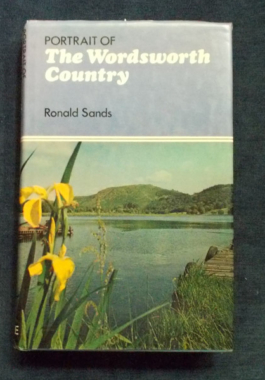 The author takes the reader on a tour of the places in Cumbria that Wordsworth maintained his connections with - where he worked, lived and travelled. Dove Cottage, Rydal, the Darling Vales, Kendal, Keswick and many other places are all included. Illustrated with black and white photographs.
The author takes the reader on a tour of the places in Cumbria that Wordsworth maintained his connections with - where he worked, lived and travelled. Dove Cottage, Rydal, the Darling Vales, Kendal, Keswick and many other places are all included. Illustrated with black and white photographs. -
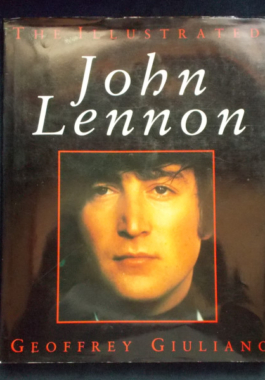 Noted celebrity biographer Giuliano and his literary partner Brenda take the reader beyond any of the two dozen plus books about the dreamy, bespectacled singer/composer from Liverpool. With text culled from over a decade of painstaking research in Lennon's extraordinary life, this insightful look at the former Beatle's life is rounded out with a treasury of sledo seen and some never-before published photographs spanning Lennon's entire life. There is also an introduction from Charlie Lennon, John's uncle, who reveals the often complicated inner world of his famous nephew.
Noted celebrity biographer Giuliano and his literary partner Brenda take the reader beyond any of the two dozen plus books about the dreamy, bespectacled singer/composer from Liverpool. With text culled from over a decade of painstaking research in Lennon's extraordinary life, this insightful look at the former Beatle's life is rounded out with a treasury of sledo seen and some never-before published photographs spanning Lennon's entire life. There is also an introduction from Charlie Lennon, John's uncle, who reveals the often complicated inner world of his famous nephew. -
 This is Herriot's own selection from his original books. All the character we know and love are here: Tristan, Siegfried, Tricki Woo, Helen, Mr Harcourt...there's the absurd, the tragic and almost unbelievable - all the incidents and people who made up the cast of characters in the life of a country vet in the 1930s. Illustrated with beautiful sketches and photographs of Yorkshire.
This is Herriot's own selection from his original books. All the character we know and love are here: Tristan, Siegfried, Tricki Woo, Helen, Mr Harcourt...there's the absurd, the tragic and almost unbelievable - all the incidents and people who made up the cast of characters in the life of a country vet in the 1930s. Illustrated with beautiful sketches and photographs of Yorkshire. -
 Middle East Illusions offers chapters written by Chomsky just before the 2000 Palestinian Intifada and up through October 2002, when 9-11 and a prospective U.S. military campaign against Iraq add new pressures to age-old conflicts. The book also includes the full text of Chomsky's earlier book, Peace in the Middle East? Reflections on Justice and Nationhood, written during the crucial period spanning the Six-Day and 1973 wars, which continue to define and deeply influence events in the Middle East today.
Middle East Illusions offers chapters written by Chomsky just before the 2000 Palestinian Intifada and up through October 2002, when 9-11 and a prospective U.S. military campaign against Iraq add new pressures to age-old conflicts. The book also includes the full text of Chomsky's earlier book, Peace in the Middle East? Reflections on Justice and Nationhood, written during the crucial period spanning the Six-Day and 1973 wars, which continue to define and deeply influence events in the Middle East today. -
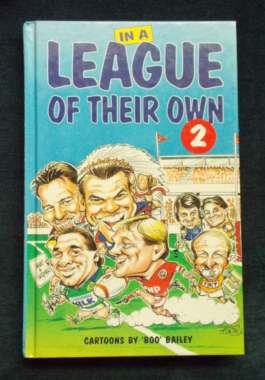 Here we go again! This book is dedicated to all those who thought rugby league was just an excuse for grown men to earn big money for having a good time. Only the names have been changed to protect the guilty..and oh, what tales they tell of murder, mayhem and mystery on the Rugby League Express. Just who was the player found smuggling a suitcase full of baked beans into his motel room? And why did Phil Blake refuse to have a shower at Brookvale Oval? And yes, the one questio all true-blue rugby league fans want answered - Who booby-trapped Terry Hill's undies? It's all here - and more - as we tell the tale of Fweddie's Fearsome Firecwacker, give the inside info on what happened to Sterlo's mouthguard before the Wigan Test in 1986 and report the first known case of elastic acid build-up. With cartoons by 'Boo' Bailey.
Here we go again! This book is dedicated to all those who thought rugby league was just an excuse for grown men to earn big money for having a good time. Only the names have been changed to protect the guilty..and oh, what tales they tell of murder, mayhem and mystery on the Rugby League Express. Just who was the player found smuggling a suitcase full of baked beans into his motel room? And why did Phil Blake refuse to have a shower at Brookvale Oval? And yes, the one questio all true-blue rugby league fans want answered - Who booby-trapped Terry Hill's undies? It's all here - and more - as we tell the tale of Fweddie's Fearsome Firecwacker, give the inside info on what happened to Sterlo's mouthguard before the Wigan Test in 1986 and report the first known case of elastic acid build-up. With cartoons by 'Boo' Bailey. -
 How did Max Krilich get to meet the Killer Rabbit? Why was Andy Gregory glad to get the hell out of Australia? Who was the Man in the Bowler Hat? How did Ronny Gibbs get on Sale of the Century? What was Johnny Raper doing in ladies underwear...and what was the miracle at Lang Park? How did Fatty Vautin save Steve Mortimer's life? What did Freddie Jones say that shocked the PM? And what was Allan Langer doing in the USA with all those big oily men??? The answers to these and many more questions are all here in the most hilarious collection of sporting stories ever assembled in Australia. Cartoons by Scott Rigney.
How did Max Krilich get to meet the Killer Rabbit? Why was Andy Gregory glad to get the hell out of Australia? Who was the Man in the Bowler Hat? How did Ronny Gibbs get on Sale of the Century? What was Johnny Raper doing in ladies underwear...and what was the miracle at Lang Park? How did Fatty Vautin save Steve Mortimer's life? What did Freddie Jones say that shocked the PM? And what was Allan Langer doing in the USA with all those big oily men??? The answers to these and many more questions are all here in the most hilarious collection of sporting stories ever assembled in Australia. Cartoons by Scott Rigney. -
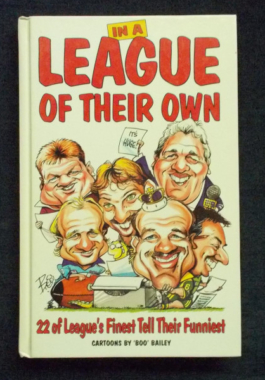 So you thought rugby league was a serious game played by hulking blokes in short pants. Think again. It might be tough out there on the field, but rugby league players love a laugh as much as the restof us. That's right - Blocker Roach and Mark Sargent are a frightening sight in full flight, but sit them down, put a cold beer in their hand and they'll spin a yarn with the best of them. And 20 more of footie's finest, ex-players and commentators do just that. Wally Lewis, Andrew Ettingshausen, Peter Sterling and more recall their hilarious moments in the game and give the inside guff of some of league's greatest mysteries and tall tales. You've heard of the 'eye of the tiger' - now read all about Tommy Raudonikus and the heart of the bull. There's the time Dallas Donnelly ate out the kitchen in Singapore and Mark Geyer stopped traffic in Paris - and just who was the Mysterious Underpants Phantom of Redfern Oval? Cartoons by 'Boo' Bailey.
So you thought rugby league was a serious game played by hulking blokes in short pants. Think again. It might be tough out there on the field, but rugby league players love a laugh as much as the restof us. That's right - Blocker Roach and Mark Sargent are a frightening sight in full flight, but sit them down, put a cold beer in their hand and they'll spin a yarn with the best of them. And 20 more of footie's finest, ex-players and commentators do just that. Wally Lewis, Andrew Ettingshausen, Peter Sterling and more recall their hilarious moments in the game and give the inside guff of some of league's greatest mysteries and tall tales. You've heard of the 'eye of the tiger' - now read all about Tommy Raudonikus and the heart of the bull. There's the time Dallas Donnelly ate out the kitchen in Singapore and Mark Geyer stopped traffic in Paris - and just who was the Mysterious Underpants Phantom of Redfern Oval? Cartoons by 'Boo' Bailey. -

 Robert Allen was born Joyce Allen and registered as a girl in August 1914; was married to a man at the age of 19, served in the forces during the war and for thirty years lived ostensibly as a woman. In 1944 he petitioned the British Government to be gender-reassigned as a man. A change of identity was officially recognised; he legally married a woman and states that he did not take hormones or have surgery. First published in 1954, this truly remarkable autobiography must have been extremely controversial. Illustrated with photographs.
Robert Allen was born Joyce Allen and registered as a girl in August 1914; was married to a man at the age of 19, served in the forces during the war and for thirty years lived ostensibly as a woman. In 1944 he petitioned the British Government to be gender-reassigned as a man. A change of identity was officially recognised; he legally married a woman and states that he did not take hormones or have surgery. First published in 1954, this truly remarkable autobiography must have been extremely controversial. Illustrated with photographs.



